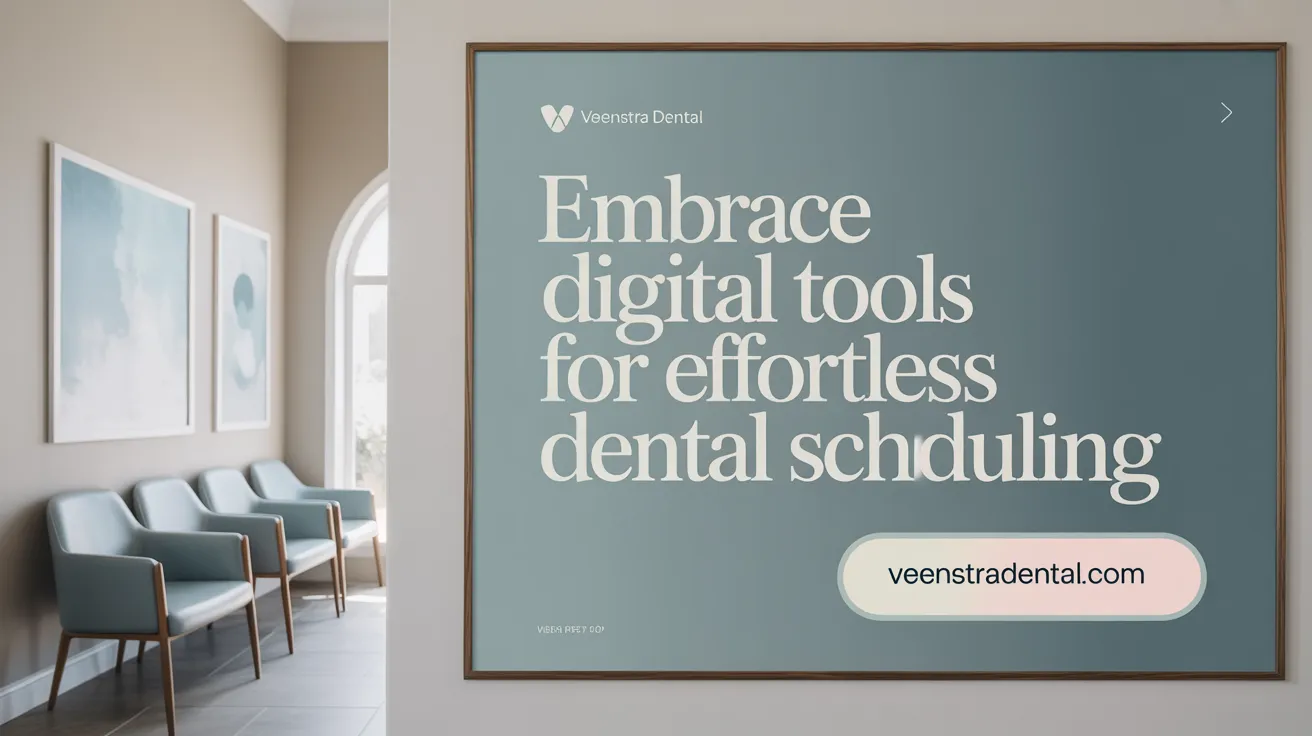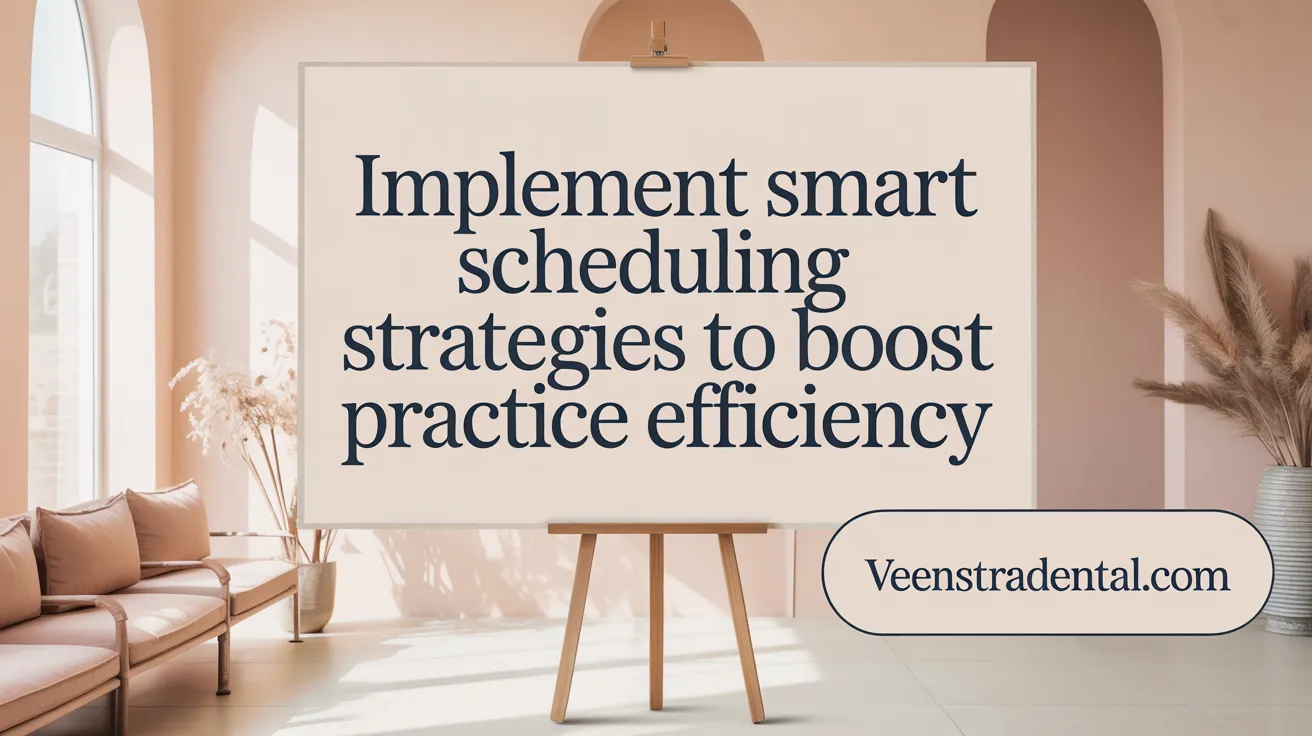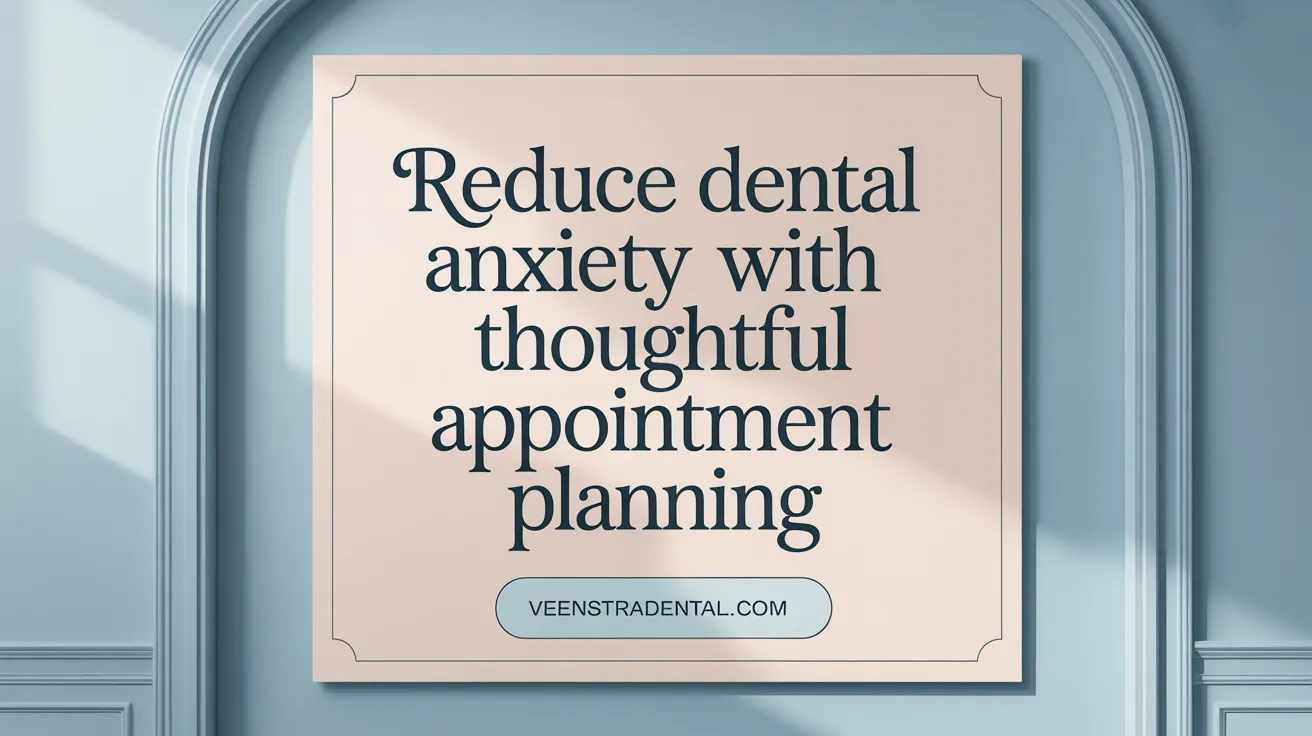Why Smart Scheduling Matters for Your Dental Health
Efficient scheduling of dental appointments is essential not only for maintaining consistent oral health but also for ensuring a smooth experience for patients and dental practices alike. From maximizing your insurance benefits to reducing wait times and managing busy lifestyles, understanding how to effectively plan your dental visits can lead to better care outcomes and less stress for everyone involved.
Optimize Your Dental Appointment Timing

When is the best time to schedule dental checkups?
Morning appointments are generally preferred due to shorter wait times and increased reliability. Booking early in the year or before the year-end is encouraged because most dental insurance benefits reset annually, allowing patients to maximize their coverage. Additionally, scheduling during less busy times, such as school breaks or seasonal lulls, can improve appointment availability and reduce wait times. For more details, see Best time to schedule dental checkups.
How can patients fit dental appointments into a busy schedule?
To accommodate busy lifestyles, many dental offices offer flexible appointment times including early mornings, late afternoons, and weekends. Patients can also streamline their visits by using calendar apps like Google Calendar or Cozi to plan ahead efficiently. For families, scheduling multiple appointments on the same day can reduce stress and time away from other commitments. Reviewing your daily schedule to find less busy time slots helps in securing convenient appointments. Learn more about busy schedule dentist tips.
Why should patients schedule dental appointments before the year ends?
Scheduling dental visits before the end of the year helps patients fully utilize their dental insurance benefits, as they typically do not roll over to the next calendar year. Furthermore, this timing allows use of flexible spending accounts (FSAs) or health savings accounts (HSAs) before those funds expire. Early booking also prevents the rush and overcrowding common during year-end, resulting in more accessible and stress-free appointment times. For further insights, refer to 5 reasons why you should schedule your dental appointments before the year-end rush.
Harnessing Technology for Seamless Scheduling

What are the advantages of online dental appointment scheduling?
Online scheduling systems have revolutionized how dental practices manage appointments. They empower patients to book their visits independently, often outside of traditional office hours. This flexibility decreases the need for staff to handle calls and reschedule appointments, saving valuable administrative time. For more details, see Online dental appointment scheduling.
Patients benefit from convenience, as they can select preferred time slots easily through user-friendly portals. Practices report higher appointment conversions thanks to the accessibility of online booking platforms. Such systems often integrate numerous functionalities including automated reminders, virtual waitlists, and online payment options, creating a smooth and efficient workflow. Learn more at Dental appointment scheduling software.
Moreover, handling appointments digitally allows dental offices to consolidate scheduling data, improving management and reducing errors compared to manual booking processes. Additional insights can be found in Effective dental scheduling.
How do automated reminders improve appointment adherence?
Automated reminders sent via texts and emails play a critical role in decreasing no-shows and late cancellations. Practices observe reductions in missed appointments by about 23-30% when reminders are implemented. Refer to Automated appointment reminders for more information.
These reminders not only prompt patients about upcoming visits but also reinforce office policies and provide options to reschedule if necessary. This proactive communication helps maintain a reliable schedule and boosts overall practice revenue. See Reducing patient no-shows with reminders.
By ensuring patients are well-informed and engaged, automated reminders enhance adherence and reduce disruptions caused by forgotten or overlooked appointments. More details are available at Scheduling strategies for a more efficient practice.
What are virtual waitlists and patient self-scheduling advantages?
Virtual waitlists allow patients to monitor and join waiting queues digitally, making it easier to fill cancellations on short notice. This technology maximizes schedule utilization and increases patient satisfaction by offering prompt access to care. Learn about Virtual dental waitlists and scheduling.
Patient self-scheduling offers autonomy and flexibility, improving engagement and lowering barriers to booking. It accommodates different communication preferences and empowers patients to take control of their oral health management. Read more at Patient self-scheduling benefits.
How do digital communication methods transform scheduling?
Shifting communication to digital channels such as text messaging, email, and online portals enhances interaction efficiency. These methods facilitate instant confirmations, updates, and feedback between patients and the dental office. Explore Digital communication in dental scheduling.
Digital channels also support multi-platform access, aligning with patient lifestyles and expectations for convenient healthcare experiences. Robust use of technology in scheduling helps dental practices streamline operations, improve patient satisfaction, and optimize appointment flow. More about Enhancing dental office productivity through digital communication.
| Technology Component | Benefits | Impact on Practice |
|---|---|---|
| Online Scheduling | Convenience, flexibility, reduced admin workload | Higher booking rates, fewer errors (Dental scheduling software) |
| Automated Reminders | Decrease no-shows, appointment adherence | Revenue protection, efficient schedules (Automated reminders) |
| Virtual Waitlists | Fill cancellations quickly, patient access | Maximize utilization, patient satisfaction (Virtual waitlists |
| Patient Self-Scheduling | Patient empowerment, booking outside office hours | Increased engagement, ease of access (Self-scheduling tools) |
| Digital Communication | Instant updates, multichannel contact | Improved coordination, better patient experience (Digital communication) |
Strategic Scheduling Practices to Maximize Efficiency

What scheduling strategies enhance dental practice efficiency?
Block scheduling is an effective approach that divides the workday into separate morning and afternoon sessions. This segmentation helps organize different types of appointments and maximizes provider productivity. Batching similar procedures—such as grouping all routine cleanings or specific treatments—streamlines workflow and minimizes the transition time between patients (Scheduling strategies for dental practice efficiency).
Including buffer times of 15 to 20 minutes between appointments is crucial. These buffers accommodate unexpected delays or longer procedures and prevent the domino effect of late starts, reducing stress on staff and enhancing patient experience (Using buffer times in scheduling.
Color-coded schedules are another valuable tool. By visually distinguishing appointment types and priorities, dental teams can quickly identify the day's flow, maintain focus, and respond promptly to scheduling needs (Color-coded dental schedules).
Double booking can improve schedule utilization when carefully managed. Coupled with a prioritized waitlist system, it allows the practice to fill slots efficiently, reduce downtime, and increase revenue without overwhelming patients or staff (Double Booking appointments; priority ASAP list.
How should emergencies and cancellations be managed in dental schedules?
Emergency appointments should be strategically placed throughout the day rather than reserved for the day's end. This approach retains staff energy and morale while ensuring urgent patient needs are met promptly (build emergency slots.
Proactively monitoring cancellation patterns enables the practice to identify common causes and adjust scheduling tactics accordingly. Utilizing waitlists and scheduling software tools helps fill last-minute cancellations effectively, recovering lost time and preventing revenue declines (Managing cancellations with waitlists; Managing last-minute appointment changes.
Together, these strategies foster a balanced, efficient dental practice that improves patient care continuity and team performance (Efficient dental scheduling system.
Preparing Patients and Staff for Successful Appointments
How can better communication improve dental appointment experiences?
Effective communication is foundational to a positive dental appointment experience. By clearly informing patients about appointment policies, expected durations, and confirmation processes, dental offices can manage expectations and minimize frustrations. Patients feel more comfortable and in control when they understand how cancellations or rescheduling should be handled. This transparency reduces no-shows and last-minute changes. For more details on patient communication and scheduling benefits, see Dental office scheduling tips.
Setting Expectations and Confirming Appointment Policies
Setting clear expectations during scheduling includes discussing procedure times and the importance of prompt attendance. Automated reminders via text or email serve as timely notices, further reducing the risk of missed appointments by about 23-30%. Reinforcing the office’s policies on cancellations and rescheduling helps maintain a full, balanced schedule and supports practice efficiency. Learn more about automated reminders and appointment confirmation strategies at Dental appointment scheduling guide.
Staff Training in Scheduling
Dental assistants often lead the scheduling process and must be proficient in handling patient inquiries, appointment prioritization, and utilizing scheduling software tools. Comprehensive training—covering conflict management, software use, and communication skills—reduces errors, avoids overbooking, and enhances patient satisfaction. It also opens avenues for career advancement, making scheduling skills a valuable asset. See Dental appointment scheduling for more on training and scheduling responsibilities.
Importance of Clear Scheduling Protocols
Adopting standardized scheduling templates and protocols promotes consistency among staff, preventing confusion and inefficiencies. Ensuring that all team members understand these protocols allows smoother management of daily appointments, emergency slots, and unexpected changes. For practical tips and protocol examples, refer to Scheduling strategies for dental practice efficiency.
Overall, effective patient communication paired with trained staff and clear protocols supports successful, stress-free dental appointments, benefitting both patients and the practice. Additional insights on optimizing dental office productivity through communication and scheduling can be found in 10 Proven Methods for Efficient Dental Scheduling.
Making Dental Visits Less Stressful Through Scheduling

How can scheduling reduce dental anxiety and improve patient experience?
Scheduling dental appointments thoughtfully can significantly alleviate patient anxiety. Choosing appointment times during less busy hours, such as early mornings or mid-afternoon, creates a calmer atmosphere and minimizes waiting, which helps patients feel more comfortable. Practices that offer flexible dental appointment times —including early mornings, evenings, and weekends—cater to diverse patient needs and reduce the stress of fitting visits into busy routines.
Additionally, encouraging patients to schedule their follow-up appointments during checkout locks in future care plans and decreases the uncertainty some may feel about booking later. Transparent communication about appointment length and processes also reassures patients, contributing to a less stressful experience. For further tips on making dental visits less stressful, see 7 Ways to Make Your Dental Visit Less Stressful.
What role does patient empowerment play in effective dental scheduling?
Empowering patients by providing online self-scheduling tools places appointment control in their hands. This autonomy not only increases convenience—allowing bookings anytime outside office hours—but also improves appointment adherence by reducing no-shows. Automated reminders sent via text or email keep patients informed and prepared, further enhancing attendance rates.
Virtual waitlist features and online payment options streamline the patient journey, making visits more seamless. When patients feel trusted and involved in managing their care, it fosters loyalty, encourages regular visits, and strengthens the patient-practice relationship.
Offering Flexible Appointment Times
Dental offices embracing flexible dental appointment times give patients the freedom to choose times that best fit their schedules, including weekends and early or late day slots. This flexibility accommodates those with demanding jobs or family commitments and lowers the barrier to regular dental care.
Encouraging Follow-Up Scheduling
Booking subsequent appointments immediately after a visit, ideally with the hygienist, improves follow-through and helps keep patients on a consistent preventive care schedule. For strategies on improving follow-up appointment adherence, see Scheduling dental appointments effectively.
Using Technology to Ease Booking
Modern scheduling software with user-friendly interfaces, automated conflict checks, and real-time availability reduces booking friction. Patients appreciate the ease of online access and reminders, which supports punctuality and satisfaction.
Patient Empowerment in Scheduling
By integrating features like 1-click booking and virtual waitlists, practices encourage patients to engage actively with their oral health maintenance, ultimately promoting healthier outcomes and a more positive dental experience.
Streamlining Your Dental Health Through Smart Scheduling
Mastering dental appointment scheduling benefits both patients and dental practices by fostering timely care, enhancing operational efficiency, and minimizing stress. Leveraging technology such as online booking and automated reminders, implementing strategic scheduling practices, and maintaining open communication are key to making dental visits work seamlessly into busy lives. Embracing these tips ensures that your dental care remains consistent, convenient, and comfortable, ultimately supporting long-term oral health and wellbeing.
